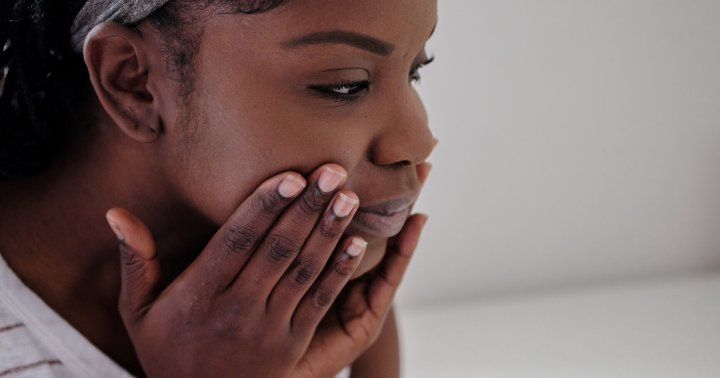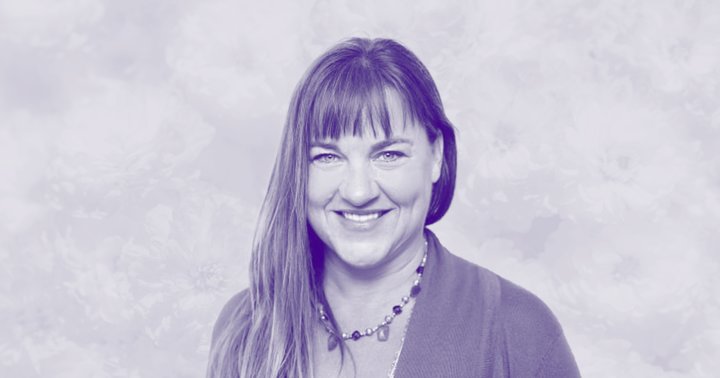How Mindfulness Can Help Us Heal White Fragility
As we practice mindful awareness and communication around race, we can build our toolkit for showing up in the world with more compassion and the capacity to learn. The post How Mindfulness Can Help Us Heal White Fragility appeared...

Welcome back to the third article of my series on mindfulness for racial healing. It’s been encouraging to have received positive feedback about the first two articles. The resilience, maturity, and courage it takes to endure through the initial discomfort that arises when we talk about race and racism is admirable. As it turns out, the subject of this month’s exploration is White fragility—not at all an easy topic to address in mixed-race spaces because it is so nuanced and distinctly different for White people and for BIPOC (Black, Indigenous, and People of Color). Please keep this in mind. Still, White fragility is an essential topic to explore for all of us because it causes harm to us all and that is critical to name as part of our collective racial healing journey.
When I came upon the work of Robin DiAngelo and her ideas about White fragility, I felt an immediate newfound sense of psychological freedom. As a Black woman having spent 30 years focusing on DEIB (Diversity, Equity, Inclusion, and Belonging) in the United States education system, it was powerful to learn a formal definition of the concept I’d been experiencing all of my life but could not fully articulate. It was freeing because now I could clearly see that I was not “crazy” or “irrational” about the many difficult exchanges I’d had with White people, who I knew in my heart were not racist, in trying to create more inclusive schools and organizations.
What I’d been experiencing and knew oh so well as a looming and frustrating barrier to most of my interactions with White people, DiAngelo was able to name and analyze so that people were able to see it in themselves and watch how it functioned. In a profound way, this understanding clarified years of resentment and softened my heart. Up until that point it felt natural and necessary to be in a state of anger, frustration, and discouragement while I tirelessly continued carrying the banner for systemic change.
I view White fragility as a protective mechanism, yet it is a false sense of protection—especially when it comes to growing awareness and consciousness to be more inclusive and create spaces of belonging.
Since I adopted this lens that includes an understanding of White fragility, I have been able to watch it operate in White people as the survival response that it truly is. This framing made me all the more strategic as I worked to deepen my emotional intelligence to navigate systemic change. I now had the tools to support their racial healing by helping them understand what was happening to them emotionally so that they could normalize it, move through it, and heal. For me, mindfulness and meditation practices in conjunction with my new learning about White fragility was key. All of this allowed me the freedom to develop enduring compassion for those White friends and colleagues who had minimal awareness of the stronghold of White fragility on their ways of being that ultimately results in racist harm.
Often when I name this sense of compassion, I endure criticism and am called into question by members of the BIPOC community who are rightfully exhausted, yet staunchly committed not to give up. It is not easy to look within from the perspective of being wronged and harmed by racism so deeply and being asked to be forgiving and compassionate, naming that the very perpetrators of systemic harm are in turn self-inflicting harm. I work hard to help my BIPOC colleagues understand the nuance of my perspective, and develop an eye for the power of compassion and patience as we continue to work in mixed-race spaces, committed to racial healing. In my view, we are on different sides of the same coin when it comes to the harm of racism.
It comes down to knowing:
For White people, White fragility is something to be controlled, mitigated, and healed. For BIPOC, White fragility is something to be navigated.For most White people, their fragility is unnamed and often denied or avoided.
What is White Fragility?
We’ll start with White fragility as defined by Robin DiAngelo in her New York Times Bestseller, White Fragility. DiAngelo’s definition is dense and includes a number of concepts to unpack, and that work is done best with a regulated nervous system. For that reason, I invite you to join me in a short awareness exercise:
I invite you to slowly read and absorb the following definition, paying attention to words or phrases that register emotionally in some way. If you have the time, read it more than once, and notice what happens each time: Do the emotional triggers weaken or go away altogether? Do they get more intense?Here’s DiAngelo’s definition:
White people in North America live in a social environment that protects and insulates them from race-based stress. This insulated environment of racial protection builds white expectations for racial comfort while at the same time lowering the ability to tolerate racial stress, leading to what I refer to as White Fragility. White Fragility is a state in which even a minimum amount of racial stress becomes intolerable, triggering a range of defensive moves. These moves include the outward display of emotions such as anger, fear, and guilt, and behaviors such as argumentation, silence, and leaving the stress-inducing situation. These behaviors, in turn, function to reinstate white racial equilibrium.
So what feelings did you experience? Processing the concept of White fragility is the key to disarming it and, of course, your racialized identity will play a large part in determining what that processing looks like. For many White people, just being referred to as a group using the word “white” can elicit a physiological reaction. Often, feelings of discomfort that arise from even hearing the term “White people,” especially repeatedly, is a sign of fragility.
As I teach about White fragility, the definition I use is, “a set of defensive behaviors that make up a survival response by White people to both protect their conditioned sense of advantage and right to comfort, and to maintain their sense of emotional safety.” I view White fragility as a protective mechanism, yet it is a false sense of protection—especially when it comes to growing awareness and consciousness to be more inclusive and create spaces of belonging.
It is human nature to want to maintain safety; White fragility does just that for White people. If White people can avoid engaging in racialized discomfort, then White people can “stay safe,” even when there’s no true threat to our safety.
In my experience throughout the decades of doing this work, I’ve seen again and again that White fragility is a learned behavior that stems from a deep, racialized conditioning of a protective survival response. Physiologically, we initially internalize a perceived threat in the same way, whether it is real or imagined, physical or emotional. This feeling of being threatened is often the source of White fragility.
A Brief History of White Fragility
So what are the dynamics that create such a felt sense of threat to White people?
On top of the centuries of horrendous racism the United States is founded on, well-established, but more subtle types of racism rose to the surface after the signing of the Civil Rights Bill in 1964. Social standards of the time taught that conversations about race were bad, to never talk about racial differences in polite society, and definitely to never to talk about race in mixed-race spaces. Although these ideas took hold and it became taboo to publicly express racist thoughts and practices, systemic racism adapted to the new legislation. Inequitable racist systems and institutions didn’t change because we can’t “policy our way out” of racism. Policy will not change a mindset or a heartset.
As the generation that was young when the bill was signed became generally more liberal, arising from their upbringing during this time, the fact that issues of race were unspeakable, made these issues even more scary and complicated to face. In our society today, we can see how these practices and attitudes were passed down from generation to generation.
What White Fragility Looks and Sounds Like
White voices claiming that they “don’t see color” and “we are all one race” actually comes from fear, uncertainty, and avoidance of discussing race. Over time, these fragile responses have worked very well to sidestep uncomfortable conversations about race and maintain White people’s sense of safety—ultimately limiting the progress of DEIB work. The result of White people avoiding or taking over DEIB education and conversations is continuous, though often unintentional, harm to BIPOC. Where equity, inclusion, race, or racism is on the table, White fragility shows up and controls the narrative.
Many DEIB training sessions, in all sectors from schools to corporations to government agencies, have been curtailed, language has been softened and in many cases, and training has stopped in order to not inconvenience White people with the realities of racial inequity and the work that’s needed to heal. In the United States, Florida Gov. Ron DeSantis signed a bill into law in 2023 that bans public colleges and universities from spending on DEIB programs or teaching critical race theory. This move is part of a larger, growing campaign to ban the studies of African American history and culture. This kind of policy clears the way for White people to reestablish the comfort they feel they need. The price is a deepening lack of understanding across racial divides and increased racist harm.
How Fragility Harms Everyone
The long term and devastating impact of White fragility has been a collective refusal to discuss racial problems that has made those same, very real problems worse. The result is the current resurgence of racist hate toward marginalized groups.
The impact through a BIPOC lens is devastating. White fragility has been so widespread in our mainstream culture that we have learned to predict and carefully navigate our response to it. It is exhausting to maneuver through environments, conversations, and interactions armoring and protecting ourselves against the imminent White fragility that is almost ever-present in felt sense and then in behavior. For BIPOC, it is a constant awareness and caution that keeps us on edge to maintain our own safety.
There was a noted change in how White people behaved for a period of time after George Floyd was killed in May 2020. I was so accustomed to dealing with fragile behavior that I felt a distinct feeling of surprise and almost shock when White people started to be more genuinely kind and keenly aware and intentional in their interactions with me. It was not behavior I was used to. For that summer, some White people had become unpredictable. Later, author and DEIB consultant Akilah Cadet would call that time period “The Summer of Allyship.”
The true power of a consistent meditation practice in mitigating behaviors of White fragility is the cultivation of self-awareness.
And just when I thought I could lighten the armor of my own racialized protection, I started to notice the swing back to conditioned White comfort and the more considerate behaviors waned or stopped about 6 months after the event of George Floyd’s murder and the ensuing protests. The Summer of Allyship had ended and I was left with more racialized hurt and disappointment.
Anchoring in the wisdom of meditation and mindfulness, I had to remind myself that thetemporary behavior of some White people in the months after George Floyd’s death wasn’t embodied; it was simply in-the-moment behavior, an immediate response to a current event. However, those who had genuinely faced their White fragility and persevered through the discomfort of the emotional turmoil that the learning brings had honed their racial stamina and made great strides in releasing their racialized conditioning that results in harm, ultimately creating a deeper sense of connection and belonging.
4 Ways to Work With Fragility
So, how can deep, systemic and societal racial healing occur if the majority of White people cannot weather the temporary discomfort of talking about race? While it’s not the entire solution, mindfulness practices and self-inquiry give us a place to start.
Meditate: Research tells us that the amygdala, the small region of the brain that controls the fight/flight/freeze response when we are triggered by an event, may actually shrink as a result of regular mindful meditation. This can help your mind and body to soften and stay open, honing in on the physiological cues that accompany a fragile reaction so you can move forward with more awareness of how fragility shows up for you. The true power of a consistent mediation practice in mitigating behaviors of White fragility is the self-awareness that is cultivated so that you have the power and self-management to first notice and then interrupt yourself. Mindfulness and meditation support you in “catching yourself in the act” and being able to course-correct, recalibrate to being more present with the difficult emotion of the fragility and supports your stamina to stay in the discomfort and lead to your healing transformation from the experience. Take a Pause: When you start to feel defensive, anxious, or avoidant, stop for a moment and take a deep breath. This mindful moment can help you process fragile reactions, further expanding your ability to notice triggers and continue with intention and awareness to not act on the trigger, choosing a more skillful response instead. Name It to Tame It: When you feel reactive or uncomfortable in conversations about race, name what you’re feeling. This practice is one way to welcome in new learning while in the middle of experiences we might have once tried to escape. As you name the sensations that are arising for you, you’ll become more familiar with the feeling of fragility and be able to identify it when it comes up instead of automatically reacting. With this new awareness, we can manage and gradually learn to challenge the discomfort that surfaces during all kinds of racialized experiences.Encouraging people to engage in racial healing together builds in intentional, curated communities of care founded in a sense of shared humanity.
Practice compassion: During the learning process of healing White fragility, we can extend love, care, and compassion, to others and to ourselves by recognizing the experience of discomfort, and the strength it takes to face it. Encouraging people to engage in racial healing together builds in intentional curated communities of care founded in a sense of shared humanity. The passion and energy created in these spaces can turn out to be powerful and enduring connectors.As a final note, it’s important to consider the research that scholar, psychologist, professor, and author of Why are All the Black Kids Sitting Together in the Cafeteria, Beverly Daniel Tatum, conducted about the impact of social justice work on educators and facilitators. She explains her team was curious about burnout and fatigue, wondering if the fight to eradicate marginalization of all kinds would take a serious toll. Their data revealed findings that proved the opposite. Over time, the more people are involved in the eradication of inequalities in our society, the more passion and resilience they build for continuing the work.
Journaling Prompts for Reflection
Explore any and all physiological cues you experienced while reading this article. Make note of the particular things you may have had a reaction to. Explore those. Consider fundamental questions you have about White fragility. Write them down and let ideas flow freely to get to deeper questions. In the safety of your personal journal, give yourself permission to explore and acknowledge things you might be scared to even think. Reflect on the times you may have witnessed, endured, or experienced White fragility. Pick one or two, and explain in detail on paper. What happened? What was the end result? What happened next? How did it impact you at the time? How did it impact you over time? Consider one main thing you might take into your everyday life to begin trying to shift/change/influence the way White fragility shows up in you or those you are with. Return to this over time. Revisit it again in three months, and compare subtle shifts in your lived experiences, thoughts, and behaviors as a result of this new learning.If you haven’t already, now might be a great time to invite someone in to discuss all of these ideas with. Accountability partners are key. Be kind to yourself, and keep going. Remember—this really does get easier, and this learning becomes something you long for.
Two Guided Meditations for Exploring White Fragility
It is important to note that we are offering two distinctly different meditations on the topic of White Fragility since it is experienced differently for those who identify as BIPOC and those who identify as White.
A Guided Meditation for Exploring White Fragility From a BIPOC Perspective
This meditation is designed for those who carry the racialized identity of Black, Indigenous, and/or People of Color.
Listen to the meditation here:
I invite you to settle in with me in a comfortable posture. Gaze down or close your eyes and take three deep breaths. Then allow your breath to just settle at a pace that feels restorative and supportive to you. In this meditation, we’re going to engage with the topic of White fragility. I recognize, as a woman of color, that this topic can sometimes be unsettling or difficult, and that is when I rely on my practice the most. So before we continue, we can name that White fragility can be infuriating for us, sometimes creating anger, doubt, confusion, and even rage. Sometimes White fragility causes us to ruminate over and over and over about even the most simple exchange. I know this because it happens to me too. So before we go any further, I just invite us to settle in together, connecting to our breath, connecting to the silence, and connecting to our ancestors. Let us just take about a minute to just sit. I want to share a quote by bell hooks that supported the empowerment of my own understanding of White fragility: “My rage intensifies because I am not a victim. It burns in my psyche with an intensity that creates clarity. It is a constructive healing rage.” It is a way for us to learn to see clearly. I choose to see white fragility clearly now, freeing myself from anger that once felt inevitable when outside the joy and love of my home. I just invite you in to perhaps take a new lens and perspective to see White fragility more clearly now, to allow any feelings of discomfort to be a balm of healing. I invite us to choose to embrace equanimity, to stay in a state of calm, a state of being even keeled in our emotions, especially when we are faced with another’s White fragility. We don’t pretend that it doesn’t take practice to achieve this state of equanimity, yet we pause and choose a practice that supports us. I invite you to reflect on a time—not too overwhelming, just mildly frustrating—when you noticed White fragility. Just allowing yourself to see the exchange. Perhaps allow yourself to feel it again. And as you reflect about the fragile behaviors of someone else, I invite you to say to yourself, “this is not mine to hold. This is not mine to hold. This is not mine to hold.” Just breathing that in, taking a pause and noticing, how does it feel when you name, “This is not mine to hold”? That person’s behavior is not yours to hold. That person’s behavior has absolutely nothing to do with you. Just allowing that to settle. We recognize that the person is suffering and offloading their suffering. Their behavior is not excused, yet you remember it is not yours to hold. We allow this knowing to become the felt sense of an emotional truth—not just a rational, intellectual truth, but a deep knowingness. So much so that this recognition can create neutrality and equanimity, a calmness in us. This equanimity and this knowledge allows us to keep our inner peace as we recognize the pain that White fragility causes us. We remember that our shared pain of racism is collective. We are alI harmed. Again, not excusing any of it. Simply making peace with it so that we can heal beyond it. And we remember to be grateful to our ancestors who have paved the way and endured so much on our behalf. As we close our sit together, I want to offer a quote by Desmond Tutu: “My humanity is bound up in yours, for we can only be human together.”Thank you for sitting with me today.
A Guided Meditation for Exploring Your White Fragility
This meditation is designed for those who carry the racialized identity of White people.
Listen to the meditation here:
I invite you to settle into a comfortable posture. Gaze down or close your eyes and take three deep breaths. Now just allow your breathing to settle at your own pace. We’re going to engage with the topic of White fragility. Maybe upon hearing this we need to take a deep breath again, but truly it’s okay. You are safe to face yourself. Before we go further inward, I want us to just sit for a moment and simply be here together, connecting to the silence and our own breath for about one minute, just following the in-breath and the out-breath. Bringing your full awareness to your body in this moment, conscious of your breathing, hearing the sound of my voice, I invite you to just be with the concept of White fragility. This concept of White fragility is a state in which even a minimum amount of racial stress becomes intolerable, triggering a range of defensive moves like anger, fear, guilt, argumentative, silence, and even flight. How does it feel to hear this? Allow a word to arise in you. Is it fear? Is it sadness? Is it confusion? Is it anger? Is it separation? Is it a feeling of disconnection? Let us just pause and breathe and notice what feelings emerge in us. Remembering the truth that racism keeps us disconnected. White fragility fuels the disconnection through defensiveness, contributing to more racism in our lived experience, even when we are not racist. And the last thing that we want to do is contribute to more racism. Scholar Cornel West says, “The condition of truth is to allow suffering to speak.” Can we face the truth of White fragility and how it shows up? What do you see in your own White fragility? What about your White fragility is speaking to you? Let us pause for silence and just take some time to listen. What about your white fragility is speaking to you? Good. Keep facing yourself. There’s so much growth here. The more you face it, the more discomfort can emerge. It’s okay. You are safe to face yourself. Breathe in that awareness and that truth. It is safe to face yourself, and there’s good news. The more you face it, the easier it gets to recognize and then interrupt. In facing it, you have the power to create a relationship with your own White fragility instead of giving it power over you. Let’s take a moment to visualize what this can be like. In this new relationship with yourself, your awareness grows. Starting this new relationship with facing yourself, facing your White fragility in this moment—this is the start of that new relationship. Remember to breathe. You can eventually feel at ease in recognizing it. You normalize this relationship of noticing it. You can even begin to embrace the difficulty and the discomfort so that you can further understand it. Imagine what it feels like doing this as we sit together. What you better understand and choose to face can be changed. And you are well on your way. Let us just sit, to anchor in this awareness of facing ourselves, acknowledging White fragility and how it shows up and acknowledging the courage it takes to notice and interrupt it. I conclude with this beautiful quote by Desmond Tutu: “My humanity is bound up in yours, for we can only be human together.”Thank you for sitting with me today.
Read More
Mindfulness for Racial Healing
Mindfulness can serve as the foundation for powerful conversations, transformational growth, and self-awareness when it comes to race and racism …

 Koichiko
Koichiko 

























![35-year-old American moved to Chengdu and lives on $30,000 a year: '[It's] poverty in America, but in China I'm living large'](https://image.cnbcfm.com/api/v1/image/108167583-1751548516689-chinacelia1.jpg?v=1751549197&w=1920&h=1080)






